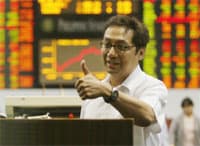Global

Investors looking for high stock market returns in rapidly growing economies such as China and India are likely to be disappointed, a new study has found. Based on equity return and dividend growth data from 17 markets spanning 105 years from 1900 to 2004, the study, published by ABN AMRO in its Global Investment Returns Yearbook, concluded that over longer intervals the correlation between higher GDP growth and stock market returns was inconsistent. Over the last few decades the correlations are small, typically explaining only one percent of stock return variation, the study reports. Apparently, high GDP growth should actually be considered a potential red flag for investors. According to the study, the higher GDP growth, the lower the return on the stock market. Those countries with a low rate of GDP growth gave an annualized stock market return of 8% compared to a return of 5% for those countries with high GDP growth. Simply because China, India and Brazil are growing faster, we shouldnt expect their stock markets to perform well in the future, says yearbook co-author Elroy Dimson of the London Business School (LBS).
In an attempt to explain why investors had historically favored markets with high growth rates, such as China, where real GDP grew by 9.5% in 2004, fellow author Paul Marsh of the LBS said there wasnot entirely surprisinglyan investor bias toward high-growth stocks. People like high-growth stocks. But the China story has been over-hyped, he says. Based on real equity returns around the world in 2004, despite outstripping other countries in terms of GDP growth, China was the only country to show a negative return (-21%) on investment.
Published in conjunction with the London Business School, the study is the most comprehensive of its kind looking at long-term investment returns since 1900 for equities, bonds, cash and foreign exchange in 17 major markets encompassing Europe, North America, Asia and Africa.
Anita Hawser



